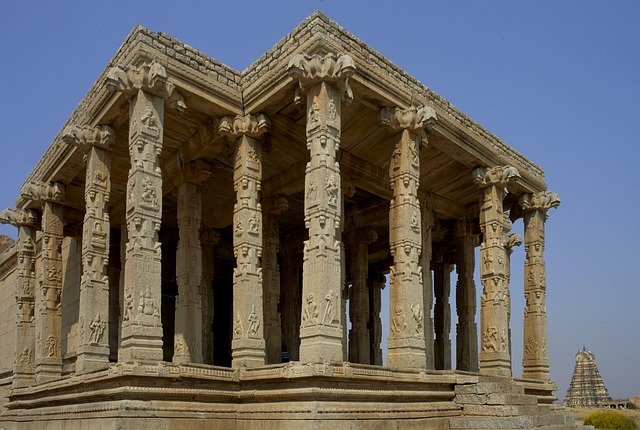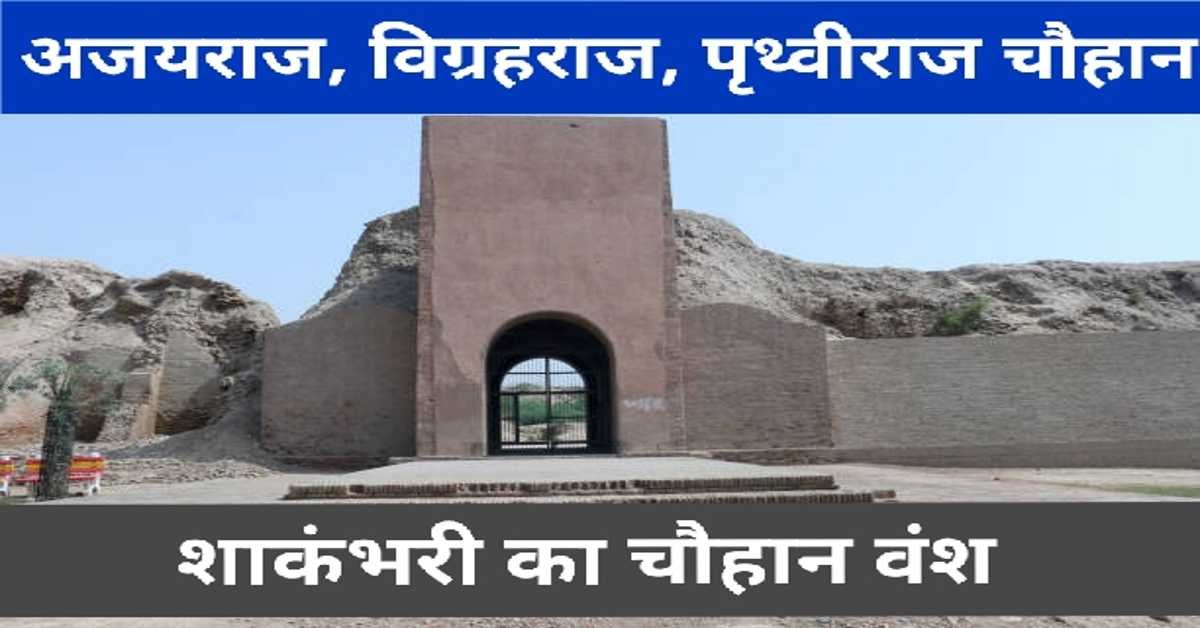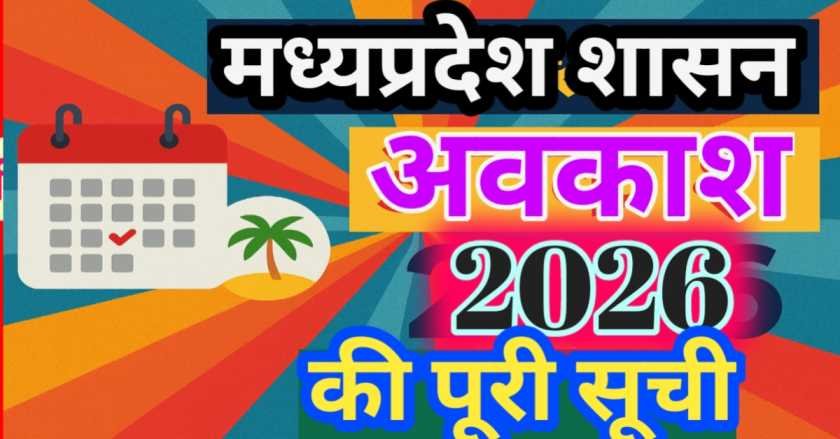
भारत का इतिहास : प्राचीन भारतीय इतिहास के अध्ययन के पुरातात्विक स्रोत।
History of India: Archaeological Sources of the Study of Ancient Indian History.
Sources of study of ancient Indian history can generally be classified into two parts: archaeological sources and literary sources.
पुरातात्विक स्रोत : (Archaeological source)
प्राचीन वस्तुएँ जिनसे हमें इतिहास की जानकारी प्राप्त होती है उन्हें पुरातात्विक स्रोत का जाता है। पुरातात्विक स्रोतों के अंतर्गत अभिलेख, स्मारक एवं भवन, सिक्के, मूर्तियाँ, चित्रकला, मुहरें इत्यादि को शामिल किया जा सकता है। जब किसी नदी के तट पर एक निर्जन टीले की खुदाई की जाती है तो हमें वहाँ से ये सभी वस्तुएँ प्राप्त होती हैं एवं ये वस्तुएँ प्राचीन भारतीय इतिहास के पुनर्निर्माण में हमारी सहायता करती हैं।
The antiquities from which we get information about history are of archaeological source. Archaeological sources may include inscriptions, monuments and buildings, coins, sculptures, paintings, seals etc. When a deserted mound is excavated on the banks of a river, we get all these things from there and these things help us in the reconstruction of ancient Indian history.
इन्हीं पुरातात्विक स्रोतों में से एक अभिलेख के विषय में बात की जाए तो ये अभिलेख इतिहास लेखन में बहुत महत्वपूर्ण है। अभिलेख पाषाण शिलाओं, स्तंभों, ताम्रपत्रों, दीवारों तथा प्रतिमाओं पर उत्कीर्ण हैं। विश्व के सबसे प्राचीन अभिलेखों में मध्य एशिया के बोगाज़कोई से प्राप्त अभिलेख हैं। इन पर वैदिक देवताओं के नाम मिलते हैं। इनसे ऋग्वेद की तिथि ज्ञात की जा सकती है।
If we talk about one of these archaeological sources, then these records are very important in writing history. The inscriptions are engraved on stone rocks, pillars, copper plates, walls and statues . The oldest records in the world are records from Bogazkoi of Central Asia. The names of Vedic deities are found on these. From these, the date of Rigveda can be found.
भारतवर्ष के सबसे प्राचीन अभिलेख अशोक सम्राट के हैं। ये अभिलेख लगभग 300 ईसा पूर्व लगभग के हैं। इतिहास के विद्वान डी. आर. भंडारकर ने अभिलेखों के आधार पर अशोक का इतिहास लिखा है। अशोक के अभिलेख की प्रमुख लिपियाँ ब्राम्ही, यूनानी, खरोष्ठी तथा अरामेइक हैं। जिन स्थानों पर अशोक के अभिलेख मिले हैं, उनमें से मास्की, गुर्जरा, निट्टूर, और उदेगोलम प्रमुख हैं। इन अभिलेखों में अशोक नाम स्पष्ट लिखा हुआ है। इसके अतिरिक्त अन्य अभिलेखों में उसे 'देवनाम्प्रिय प्रियदर्शी' (देवों को प्यारा) कहा गया है। अशोक के अभिलेख को सर्वप्रथम 1837 ईस्वी में जेम्स प्रिंसेप ने पढ़ा था। यह अभिलेख ब्राह्मी लिपि में था। अशोक के अभिलेख के अतिरिक्त अन्य अभिलेख भी हैं। इसके अंतर्गत हमें अनेक प्रशस्तियाँ मिलती हैं। जिनमें दरबारी कवियों या लेखकों ने अपने आश्रय दाताओं की प्रशंसा की है। इनमें से प्रमुख हाथीगुंफा अभिलेख, गिरनार अभिलेख, नासिक अभिलेख, प्रयाग स्तंभ लेख, भीतरी स्तंभ लेख, मंदसौर अभिलेख, ऐहोल अभिलेख इत्यादि हैं। अभिलेखों के अध्ययन को 'एपीग्राफी' कहा जाता है।
The oldest inscriptions of India are of the Ashoka Emperor. These inscriptions date back to 300 BCE approx. History scholar D. R. Bhandarkar has written the history of Ashoka on the basis of inscriptions. The major scripts of Ashoka's inscription are Brahmi, Greek, Kharoshthi and Aramaic . Among the places where Ashoka's inscriptions have been found are Maski, Gurjara, Nittur , and Udegolam . The name Ashoka is clearly written in these inscriptions. Apart from this, in other inscriptions he is called 'Devanampriya Priyadarshi' (beloved to the gods) . Ashoka's inscription was first read by James Prinsep in 1837 AD . This inscription was in the Brahmi script . Apart from Ashoka's inscription, there are other inscriptions. Under this, we get many commendations. In which court poets or writers have praised their asylum donors. Prominent among these are Hathigumpha inscription, Girnar inscription, Nashik inscription, Prayag pillar article, inner column article, Mandsaur inscription, Aihole inscription etc. The study of inscriptions is called 'epigraphy' .
स्मारक एवं भवनों के अध्ययन से भी प्राचीन भारत के बारे में जाना जा सकता है। यह जनता की आध्यात्मिकता तथा धर्म निष्ठा का ज्ञान कराते हैं। प्राचीन काल में भारत वर्ष में भारी संख्या में मंदिरों का निर्माण किया गया। इनके अवशेष पूरे भारतवर्ष में बिखरे हुए हैं। महलों तथा मंदिरों की शैली से वास्तुकला के विकास पर पर्याप्त प्रकाश पड़ता है। भारतवर्ष के प्रमुख मंदिर - देवगढ़ का दशावतार मंदिर (झांसी), अजंता की गुफाओं के चित्र, भीतरगाँव का मंदिर (कानपुर), सुल्तानगंज से प्राप्त बुद्ध बुद्ध की ताम्र मूर्ति आदि। ये सभी मंदिर हिंदू कला व सभ्यता के पर्याप्त विकसित होने को प्रदर्शित करते हैं। भारतवर्ष में मंदिरों की मुख्य रूप से तीन शैलियाँ प्रचलित थी :
Ancient India can also be known from the study of monuments and buildings. They make people aware of the spirituality and faithfulness of the people. In ancient times, a large number of temples were built in the year India. Their remains are scattered all over India. The style of palaces and temples sheds considerable light on the development of architecture. Major temples of India - Dashavatar Temple (Jhansi) of Deogarh, pictures of Ajanta caves, Temple of Bijgaon (Kanpur), Buddha statue of Buddha from Sultanganj etc. All these temples demonstrate the substantial development of Hindu art and civilization. Three main styles of temples were prevalent in India:
1. नागर शैली : यह उत्तर भारत की शैली है। खजुराहो का कंदरिया महादेव का मंदिर इसी शैली से बनाया गया है।
1. Nagar style: This is the style of North India. Khajuraho's Temple of Kandariya Mahadev is built in the same style.
2. बेसर शैली : यह मध्य भारत की मंदिर निर्माण की शैली है।
2. Basar style: This is the temple building style of Central India.
3. द्रविड़ शैली : यह दक्षिण भारत की शैली है। तंजौर का राजराजेश्वर मंदिर इसी शैली से निर्मित किया गया है।
3. Dravidian style: This is the style of South India. The Rajarajeshwara Temple of Tanjore is built in the same style.
स्मारक और भवन के अतिरिक्त प्राचीन सिक्कों से भी हमें प्रचुर मात्रा ऐतिहासिक जानकारी प्राप्त होती है। पुराने सिक्के सोना, चाँदी, ताँबा, सीसा आदि धातुओं से बनाए जाते थे। प्राचीनतम सिक्कों को 'आहत सिक्के' कहते हैं। आहत सिक्कों को 'पंचमार्क सिक्के' भी कहा जाता है। यह सिक्के ईसवी पूर्व पांचवी सदी के हैं। ये सिक्के ठप्पा मारकर बनाए जाते थे। इन सिक्कों पर पेड़, मछली, सांड, हाथी और अर्द्धचंद्र आदि के चिन्ह बनाए जाते थे। सबसे अधिक सिक्के मौर्योत्तर काल में बने हैं। सातवाहनों ने सीसे तथा गुप्त शासकों ने सोने के सिक्के चलाए थे। सिक्कों पर लेख लिखने का कार्य सबसे पहले यवन शासकों ने किया। समुद्रगुप्त की वीणा बजाते हुए मुद्रा वाले सिक्के से उसके संगीत प्रेमी होने का ज्ञान होता है। सिक्कों के अध्ययन को 'न्यूमिस्मेटिस' कहा जाता है।
Apart from monuments and buildings, we also get abundant historical information from ancient coins. Old coins were made from metals like gold, silver, copper, lead etc. The oldest coins are called 'hurt coins' . The hurt coins are also known as 'punchmark coins' . These coins belong to the fifth century BCE. These coins were made by striking. Signs of tree, fish, bull, elephant and crescent etc. were made on these coins. Most coins are made in post-Mauryan period. The Satavahanas led gold coins and the Gupta rulers carried gold coins. The Yavan rulers were the first to write articles on coins. The coin containing the currency playing the harp of Samudragupta shows his knowledge of being a music lover. The study of coins is called 'numismatism' .
मूर्तियाँ भी हमें प्राचीन इतिहास का अध्ययन करवाती हैं। मूर्तियों का निर्माण प्राचीन भारत में कुषाण काल से आरंभ होता है। कुषाण कालीन मूर्तियों पर वैदेशिक प्रभाव है। मथुरा कला पूर्णतया स्वदेशी है। बोधगया, सांची, भरहुत तथा अमरावती की मूर्तिकला में जनसाधारण की जीवन शैली की सजीव झलक देखने को मिलती है।
Statues also make us study ancient history. The construction of idols begins in the Kushan period in ancient India. The Kushan carpets have a foreign influence on the sculptures. Mathura art is completely indigenous. Bodhgaya, Sanchi, Bharhut and Amaravati sculpture gives a living glimpse of the lifestyle of the masses.
मुहरें इतिहास लेखन व अध्ययन में बहुत सहायक हैं। यह व्यापारिक, धार्मिक, आर्थिक जीवन के बारे में पर्याप्त जानकारी देती हैं। हड़प्पा, मोहनजोदड़ो से प्राप्त मिट्टी की मुहरों में बने धार्मिक प्रतीकों से उस समय की धार्मिक अवस्थितियाँ के विषय में जानकारी प्राप्त होती है।
The seals are very helpful in history writing and study. It gives enough information about business, religious, economic life. Religious symbols made in clay seals obtained from Harappa, Mohenjodaro provide information about the religious positions of that time.
RF competition
INFOSRF.COM
संबंधित जानकारी नीचे देखें।
(Watch related information below) 👇🏻

आशा है, उपरोक्त जानकारी उपयोगी एवं महत्वपूर्ण होगी।
(I hope the above information will be useful and important. )
Thank you.
लेखक
(Writer)
infosrf.com


.jpg)





